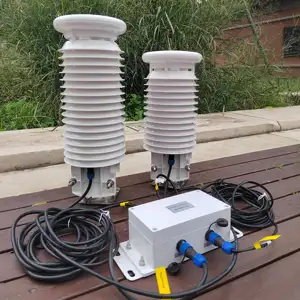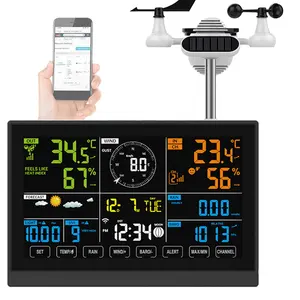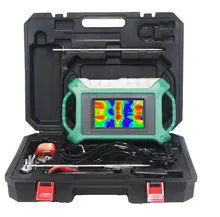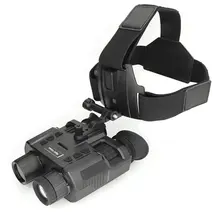A home weather station is a device used to monitor and track weather conditions within a specific location, such as a residential property or area. The stations typically consist of a combination of sensors, instruments, and a display unit that provides real-time data on weather conditions. A weather station for a home can range from simple models that only measure temperature to more advanced and sophisticated systems that provide a wealth of data and features, including real-time weather forecasts, historical weather data, and the ability to connect to the Internet for remote monitoring. Whether for irrigation or education, building a personal weather station is easy and can be done at a reasonable price for optimal observations.
Indoor weather station
An indoor weather station is a device used to monitor and track weather conditions inside a building or structure. It uses a combination of sensors and a display unit that provides real-time data on indoor temperature, including humidity, barometric pressure, and air quality. There are many types of weather stations developed indoors. Consumers can find anything ranging from basic models that only measure temperature and humidity to more advanced systems that provide additional data, such as air quality, CO2 levels, and even mood lighting. Some can also be connected to other machines to control indoor climate directly, such as adjusting heating and cooling systems based on real-time temperature and humidity levels. It helps maintain indoor weather conditions to create a comfortable and optimal indoor environment without excessively wasting electricity.
Outdoor weather station
An outdoor weather station is a useful device that provides weather data outside of a building or structure. It typically consists of sensors and a display unit that provides real-time data to help people stay informed and prepare for changing weather conditions, including data on outdoor temperature, humidity, wind speed and direction, rainfall, and barometric pressure for daily monitoring. Advanced outdoor weather systems can even provide additional data, such as UV radiation, solar radiation, and soil moisture, that are commonly used for agricultural or horticultural activities. Some wireless weather stations also offer connectivity to the Internet, allowing users to access real-time weather data and view historical weather data from anywhere.
How accurate are outdoor/indoor weather station models?
The accuracy of an outdoor or indoor weather station can vary depending on the sensitivity of the sensors and instruments, as well as the location of the station. For outdoor indoor weather stations with wireless sensors, consider the range for wireless transmission. Make sure the range is sufficient for its needs and that there are no obstructions that may interfere with the transmission. Generally speaking, home weather stations can provide data within a few degrees of accuracy compared to official weather stations. Plus, it is also important to regularly clean and calibrate the sensors and instruments to maintain the accuracy of any home weather station.
































 浙公网安备 33010002000092号
浙公网安备 33010002000092号 浙B2-20120091-4
浙B2-20120091-4